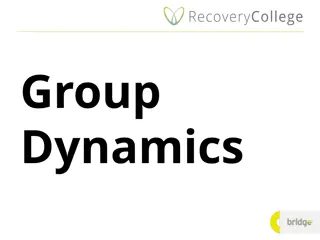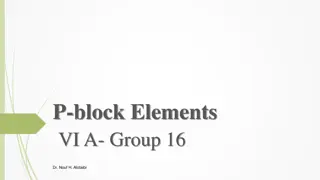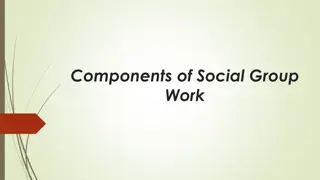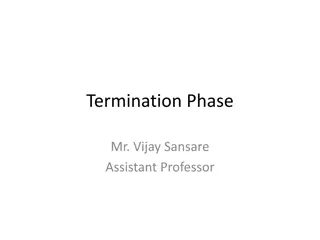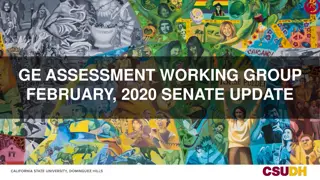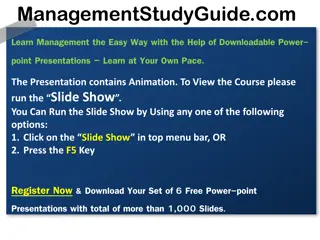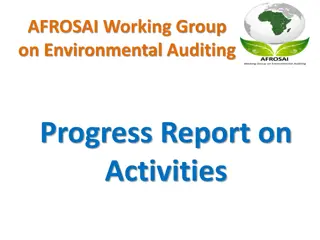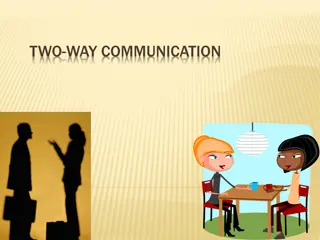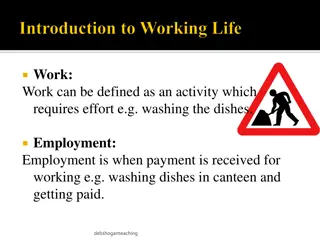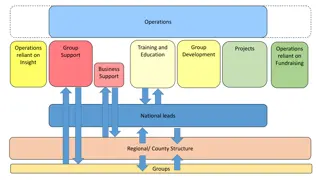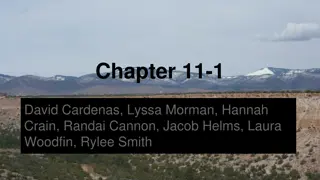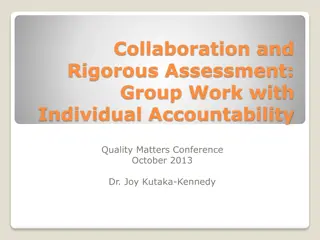Enhancing Group Work in Education
Explore the challenges and benefits of group work in education through insights on student preferences, common obstacles, and strategies for successful group project implementation. Discover the importance of well-designed projects, effective grading methods, and the rationale behind conducting group assignments. Gain valuable perspectives on forming groups, defining responsibilities, and fostering a collaborative learning environment.
Download Presentation

Please find below an Image/Link to download the presentation.
The content on the website is provided AS IS for your information and personal use only. It may not be sold, licensed, or shared on other websites without obtaining consent from the author. Download presentation by click this link. If you encounter any issues during the download, it is possible that the publisher has removed the file from their server.
E N D
Presentation Transcript
Reflective Practice March 7, 2012 Laurel Black
What do students like best about group work?
Time consuming Face-to-Face meetings are hard to arrange Lag time and miscommunication with social media Slackers and controllers Lack of clarity on goals Others poor skills in ________ Shared grades Poorly designed projects
Ownership/Partnership Time/Benefit Ratio
Well designed group projects lead to effective, time-efficient grading.
Why is this a group project anyway? How are the groups being formed? How many of us will be in a group? What will YOU do, as the teacher? (Almost never asked, but always in the background!) What do we have to do (components)? When do we have to do it? What are we going to produce? How will you grade us?
Why is this a group project? It needs (or is improved by) many different skills and points of view It s too large for one person to do in the time allotted A goal is developing new skill sets It replicates real life experiences (professionalization)
Randomly By student choice By previously demonstrated skills/knowledge By skills and knowledge students want to gain By astrological sign By GPA By majors By gender By ?
http://www.iup.edu/page.aspx?id =69281 (Many thanks to Jennifer Jones!)
How many components are there? How much time is given for completion? What level of redundancy do you need? How will communication take place?
Provide structure Oversee process Provide samples Offer advice Provide feedback Evaluate Grade
What do we have to do (what are the components)? When do we have to do it? What are we going to produce? How will you grade us?
Components Individual work vs. Shared work Process vs. Product External vs. Internal Evaluation
Break it down; go in reverse Example: Magazine= Products Articles Ads Foreword Artwork Layout/Design
Products = Process Writing articles Discussing content and order of materials Editing/Proofreading Discussing theme Choosing artwork
Brainstorming/designing Finding sources or materials Interviewing Critiquing Layout and Design Editing/Proofreading _______________?
Portion of written/visual document Portion of spoken presentation Single Role: note taker; editor Attending meetings (virtual or face-to-face) ___________________?
Internal Evaluation Meeting Logs Postings to social media sites Shared emails/Google docs Group numerical evaluations Narrative Self-group evaluations Meetings with instructor ____________________?
External Evaluations Product Evaluation (Rubric) Classmates Evaluations Outside Recipient/Supervisor Evaluation _________________?
What do you value most? Process? Final Project? Reflection on learning? Individual components? Shared work? Will students do repeated group work with changing percentages or roles? How does that affect your grading?
Progressive/Formative Feedback Shared feedback vs. Private Feedback Time Constraints on Feedback
More formative feedback means less summative feedback. Set deadlines for partial completion Share impressions of group dynamics Meet with groups during the process
Checklists and Rubrics Narratives Peer Feedback Professional Feedback
Be sure YOU get feedback from students. Where did they struggle? What was unclear and when did it become clear? What skills did they need to have that they didn t? What do they feel they learned? From what part of the project? What grade would they give the project structure and value? Why?










